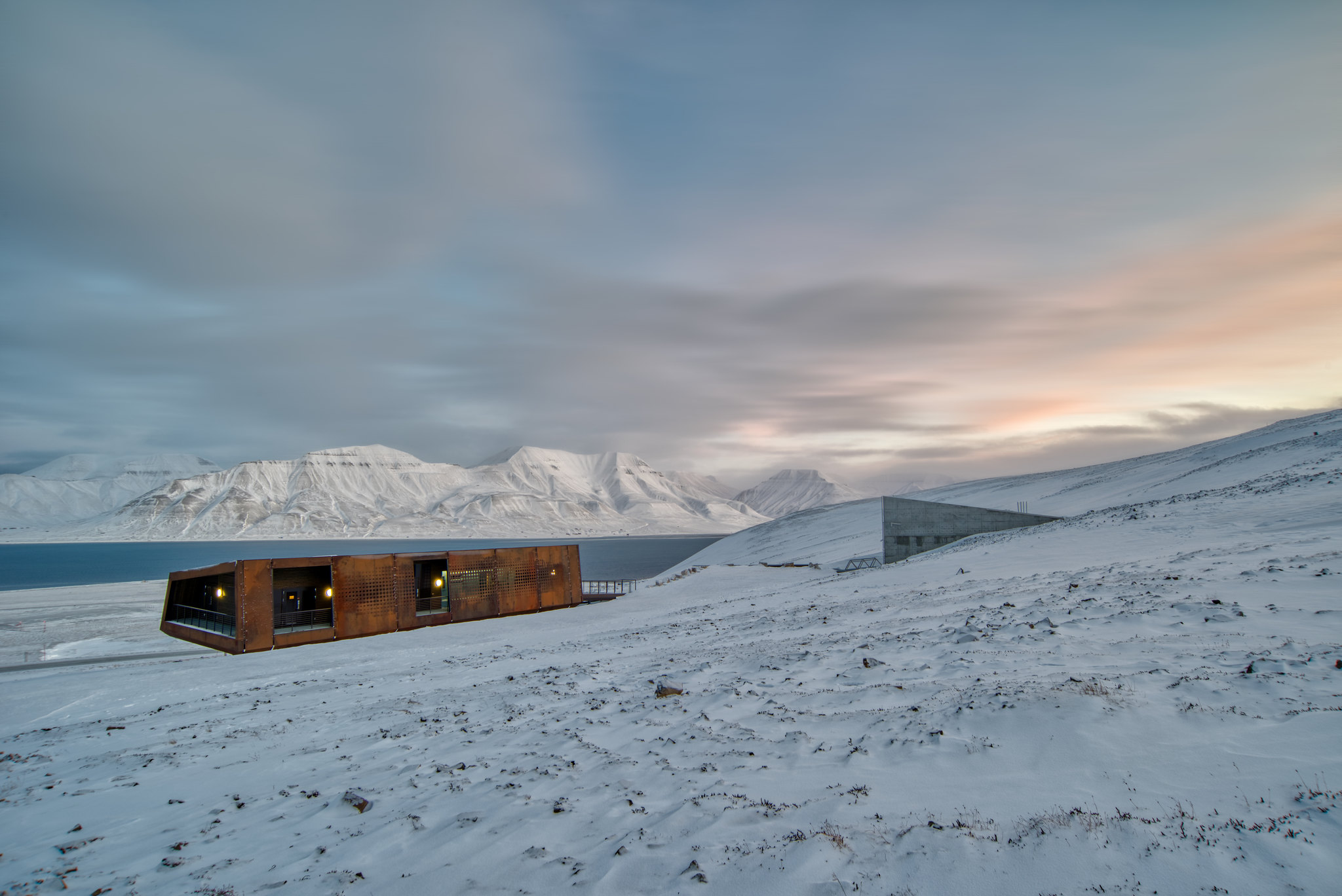
The History
The idea of having a global security storage facility in Svalbard, to house duplicates of seed conserved in gene banks all over the world began being discussed in the 1980s.
n 1984, the Nordic Gene Bank (now NordGen) had established a back-up seed storage facility in an abandoned coal mine outside Longyearbyen, and the idea of establishing a worldwide back-up storage gradually evolved. In fact, today, there is often a misunderstanding that the Svalbard Global Seed Vault is actually in an abandoned coal mine but, of course, it is carved into the solid rock of a permafrost mountain.
Government of Norway’s commitment
In 2001, negotiations that led to International Treaty on Plant Genetic Resources for Food and Agriculture (ITPGRFA) were finalized, and the Treaty opened to signatures by national governments. The Treaty calls for establishing a multilateral system for plant genetic resources that includes global rules for access to and benefit sharing of those resources.
With this in mind, the Government of Norway was approached by Bioversity International (then IPGRI) and encouraged to consider the establishment of a global facility at Svalbard. Based on the results of a 2004 feasibility study and the endorsement and welcoming of the initiative by the FAO Commission on Genetic Resources for Food and Agriculture, in October 2004, the Norwegian Government committed to fund and establish the Svalbard Global Seed Vault.
Opened in February 2008
The Seed Vault was opened 26 February 2008 in the presence of the Prime Minister of Norway, Jens Stoltenberg, the President of the European Union, José Manuel Barroso, Director-General of the Food and Agriculture Organization (FAO) of the United Nations, Jacques Diouf, and Nobel Peace Prize laureate, Wangari Maathai.
Permafrost, available infrastructure and cooperation with the coal company Store Norske Spitsbergen Kullkompani led to the mid-1980s establishment of a gene bank that would conserve security copies of the Nordic seed collection in a steel container inside Coal Mine #3 in Longyearbyen.
New halls in virgin rocks
In looking toward Norway’s establishment of a global gene bank, a feasibility study carried out in 2004 revealed that the permafrost – which maintained a temperature of approximately -3,5°C – was not optimal for the high security storage of the global heritage of genetic resources. It also determined that the Nordic seed collection’s storage in a coal mine periodically facing a high level of hydrocarbon gases was not sufficiently safe.
Consequently, the solution would have to be a new construction in virgin rocks without coal, and with additional cooling for bringing temperatures down to freezing levels, which are the standard conditions in gene banks.
Global Treaty endorses to Seed Vault concept
When The International Treaty on Plant Genetic Resources for Food and Agriculture (ITPGRFA) entered into force in 2004, the legal framework for having one international security facility was already in place. The seed samples shipped to Svalbard would still be the property of the country or the gene banks that sent the seeds. The Treaty became the guidance for one of the important conditions for depositing seeds in the Seed Vault, namely that any depositor agrees to make available – from its own stocks – samples of the deposited seed resources for research, plant breeding and educational purposes.
Svalbard location receives support
The feasibility study concluded that it would be possible to establish an ultimate “fail-safe” protection for the world’s most valuable natural resources, that it could be efficient, sustainable and affordable, and also politically and legally acceptable. It also recognized Svalbard as the most suitable place for a global seed vault.
In 2005, Statsbygg, Norway’s public-sector company for planning, building and managing public buildings was assigned to start a planning process. The Finnish architect Peter Söderman made the engineering drawing. The initiative had strong Nordic support. In June 2006, the prime ministers of the five Nordic countries announced establishment of the Seed Vault initiative in a small ceremony at Svalbard, and in June 2007, it announced adoption of a Nordic Council of Ministers resolution.
Institutions welcome Seed Vault initiative
Many international and national gene banks, including the centres of the Consultative Group on International Agricultural Research (CGIAR) welcomed the initiative. In preparation, they started the process of multiplication and shipment of seeds, in order to have them ready and in place in Longyearbyen for the opening ceremony that took place 26 February 2008.
More than 320,000 seed accessions were deposited in the Seed Vault as part of the opening ceremony activities.
The Norwegian Ministry of Agriculture of Food is in charge of the Seed Vault. However, the Ministry of Foreign Affairs and the Ministry of Environment were involved in the preparations. Five Norwegian ministries were members of the planning committee, which also included assistance from a range of technical experts, including the Nordic Genetic Resource Centre (NordGen, the former Nordic Gene Bank) and the Crop Trust (formerly the Global Crop Diversity Trust).
Long term partnership
In 2007, Norway entered into a long-term partnership agreement with NordGen and the Crop Trust to provide for the Seed Vault’s funding, management and operations. The agreement states that the responsibility for the Seed Vault rests with the Ministry which also funds the major part of management costs, while the Crop Trust allocates a fixed sum of yearly operating costs and NordGen oversees the Seed Vault’s management and seed operation. Statsbygg, the Norwegian government’s key advisor in construction and property management is responsible for day-to-day surveillance and monitoring, and the maintenance of the facility.
